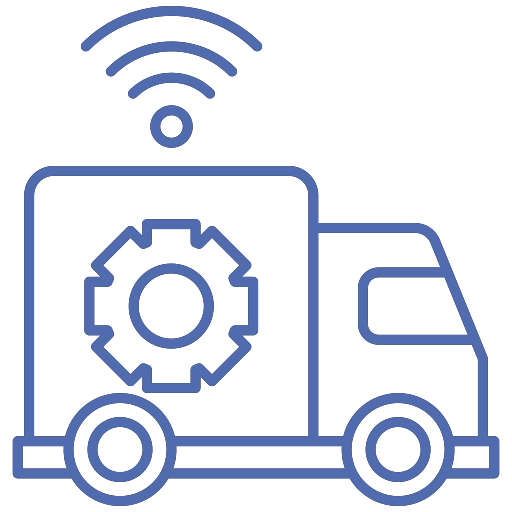Now we have understood the challenges faced by transporters who used traditional methods of navigating through logistical operations. We also realized that complete digitalization is a lifesaver for transporters’ operational requirements. Today, the transport industry stands at the cusp of a major transformation. Artificial Intelligence and automation are revolutionizing traditional logistics operations, from automated route planning to predictive maintenance. What once required manual coordination across multiple teams can now be accomplished through smart systems that learn and adapt. This shift isn’t just changing how we work—it’s fundamentally reshaping team structures and roles within transport organizations.
The Great Team Evolution
Industry analysis reveals a significant shift in operational efficiency through digital transformation. Organizations implementing comprehensive fleet management solutions have seen their team’s productivity improve by upto 40%. Traditional transport teams have been able to significantly streamline their operations while maintaining or improving efficiency through digital solutions.
Let’s look at the impact created on transporters team size after the implementation of digitalization:
Department
Traditional Role
Digital Transformation Role
Team Size Impact
Fleet Management
Manual Vehicle Tracker
Digital Fleet Coordinator
↓ Rationalize
Dispatch
Phone-based coordination
AI Operations Strategist
↓ Rationalize
Maintenance
Reactive Repair Technician
Predictive Maintenance Specialist
↔ Stabilize
Customer Service
Manual Communication Handler
Digital Customer Experience Coordinator
↓ Rationalize
Operations Planning
Manual Route Planner
Advanced Analytics Strategist
↓ Rationalize
Compliance
Paper-based Compliance Checker
Technology Compliance Analyst
↔ Stabilize
Other factors could also affect the team’s size:
Fleet size and complexity directly impact staffing needs – larger fleets with diverse vehicle types (trucks, vans, specialty equipment) require more personnel for maintenance, scheduling, and management. A fleet of 100 mixed vehicles typically requires more coordination than 100 identical vehicles due to varied maintenance schedules and operational requirements.
Geographic spread affects team distribution – operations spanning multiple regions or time zones often require decentralized teams or satellite offices. For example, a fleet operating across three states may need regional supervisors and support staff in each location to handle local dispatching, maintenance, and customer service effectively.
The types of services offered shape workforce requirements – specialized services like hazmat transport or refrigerated delivery demand additional trained personnel and expertise. Each service type may require dedicated coordinators, specialists, and support staff to maintain service quality and compliance.
Customer requirements influence staffing levels: High-touch customers needing frequent communication, specific delivery windows, or specialized handling require more customer service representatives and account managers. B2B clients often require dedicated support teams for managing complex service agreements and maintaining service levels.
Technology adoption level impacts team efficiency: Organizations with advanced fleet management systems, automated dispatching, and real-time tracking generally require a lesser load for routine tasks. A well-implemented digital platform can reduce the need for manual dispatchers and coordinators while shifting focus to strategic roles and exception handling.
The digital transformation in logistics is not just about reducing team sizes, but fundamentally reimagining how transportation operations work. By embracing technological innovations, organizations can create more agile, efficient, and strategic teams that leverage data and artificial intelligence to drive unprecedented levels of operational excellence.

The Digital Toolkit That’s Changing Everything
This is where the magic happens. Modern driver behavior analytics tools don’t just show you what’s happening – they help you predict what’s going to happen and suggest how to improve it.
These digital tools are transforming traditional logistics roles in fundamental ways. Dispatchers are evolving into data-driven decision-makers, leveraging AI insights for optimal route planning. Fleet managers are becoming strategic planners, using predictive analytics to optimize vehicle utilization and maintenance schedules. Even driver roles are expanding, with real-time analytics helping them improve performance and efficiency on the road.
Your Next Step Forward
Ready to transform your transport operations? Modern fleet management solutions can help you streamline operations, boost efficiency, and empower your team to achieve more. The key is finding the right balance of technology and expertise for your specific needs.























